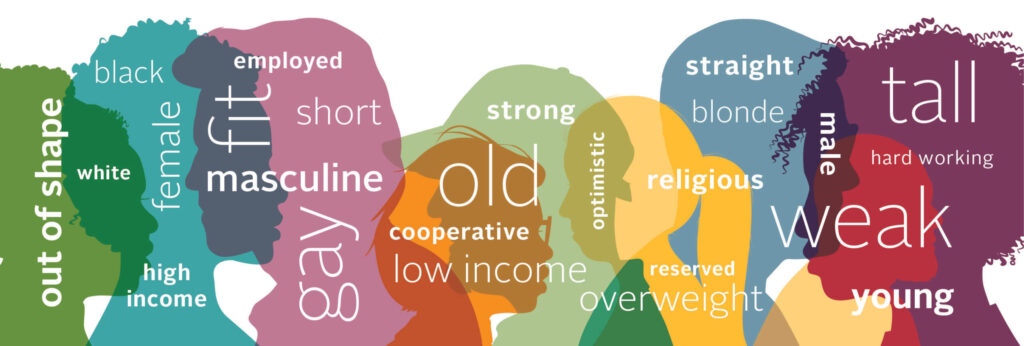 Kris English, PhD
Kris English, PhD
Professor Emeritus of Audiology
University of Akron
Student clinicians have a lot on their minds when they begin new clinical assignments. It’s possible that the exhortation to “establish patient rapport” registers as less important than accurate testing, proper use of technology, and precise documentation — and in the back of their minds, they may also be wondering, “What does ‘establishing rapport’ actually mean??”
Fifty years ago, an assistant professor in nursing1 asked the same question. “[Rapport] has become a cliché, an interpersonal bromide. We all know that it’s a good thing to have – but we’re not really sure what it is” (p. 70). Just recently, a scoping review2 determined that there was as yet no agreed-upon definition for rapport relative to healthcare. Elsewhere, however, “rapport” has been framed as a synonym for “therapeutic relationships”3 and described as “a positive, dyadic concept that comprises positive affect (liking), mutual attention, and coordination”(p. 1129).4
These descriptors are helpful, but the stressor point for students may be less about “what rapport is” and more about “how does one achieve it?”
Back to First Principles
This typical definition from Merriam-Webster for “rapport” (noun)…

a friendly, harmonious relationship, especially characterized by agreement or empathy that makes communication possible or easy
…reveals the clinical challenge: describing an existing relationship does not help us understand the process of establishing or building rapport.
“Rapport as process” starts off in an uncomplicated way. It includes familiar and natural behaviors: warm welcomes, conversations about patients’ lives and interests, giving warning before touching patients, and overall taking time to connect as human beings, as confirmed by patients themselves:
‘I used to teach people to drive cars … I would make sure, before I pulled up or picked anyone up, that I knew what their first name was, what their surname was, their date of birth and a little bit about them, before I’d even met them … No matter what you do, if you’re trying to create a bond or a – yeah, a bond will do – they’re the things you need to start with. Following on from that, you need to know the person’s needs … and their wants’(p. 7)5
[My clinician] was friendly and open, explained what was being done and seemed to understand me as an individual … answered my questions at an appropriate level when prompted…I always get a friendly welcome”(p. 198)6
What We May Not Notice: Unintended Hinderances
Less apparent to us are circumstances that hinder rapport-building, e.g.,
- When patients sense awkwardness and avoidance (not receiving a warm welcome or eye contact; use of unexplained medical jargon)
- When patients feel judged and uncared for (perceiving conscious or unconscious prejudice and disregard)2
These negative patient impressions resonate in the literature addressing discordant healthcare dyads. As discussed here, the term “discordant” does not mean that discord or friction or tension exists, but simply describes a dyad where differences exist with respect to:

https://www.tmc.edu/news/2019/10/best-intentions-wont-solve-implicit-bias-in-health-care/
- Gender7-10
- Age5,11-13
- LGBTQ+ community14-19
- Race20-24
- Culture25,26
- Socioeconomic status27-31
… plus intersections of these and other characteristics. Realistically, we should expect some degree of “dyadic discordance” on any given workday; more importantly, we should be aware that interpersonal differences could prompt behaviors influenced by unexamined implicit biases, resulting in those patient perceptions of awkwardness, avoidance, feeling judged and uncared for.
Discordance is Not Destiny

Working through rapport challenges: A lot to unpack
Implicit biases are part of the human experience, but are not irrevocable. Trainees might benefit from readings,32 discussions, role-playing, feedback about efforts, successes, struggles, and insights.
Of course, difficulties with patient rapport may also be related to shyness, insecurity, self-consciousness, under-preparedness, fear of failure… concerns that supervisors may refer to professional counselors.
Conclusion
A clinician’s ability to establish rapport cannot be taken for granted, and may actually require considerable attention. It may elude definition in research articles but in real-life clinic, we know that authentic patient rapport lays the groundwork for person-centered care.
References
- Travelbee J. (1963). What do we mean by rapport? American Journal of Nursing,63(2), 70–72.
- English W. et al. (2020). The meaning of rapport for patients, families, and healthcare professionals: A scoping review. Patient Education and Counseling, 105, 2-14.
- Norfolk T et al. (2007). The role of empathy in establishing rapport in the consultation: A new model. Medical Education, 41, 690-697.
- Henry S. et al. (2017). Associations between thin slice ratings of affect and rapport and perceived patient-centeredness in primary care: Comparison of audio and video recordings. Patient Education and Counseling, 100, 1128-1135.
- Orgin R. et al. (2020). The inter-relationship of diversity principles for the enhanced participation of older people in their care: A qualitative study. International Journal of Equity in Health, 19:16.
- Potter M. et al. (2003). The physiotherapy experience in private practice: The patients’ perspective. Australian Journal of Physiotherapy, 49, 195-202.
- Choudhury A. et al. (2020, October). Impact of gender on doctor-patient communication and emotion: Exploratory analysis. 2020 IEEE International Symposium on Systems Engineering (ISSE)(pp. 1-10)
- Gross R. et al. (2008). The association of gender concordance and primary care physicians’ perceptions of their patients, Women & Health, 48(2),123-144.
- Schieber AC et al. (2014). Do gender differences affect the doctor–patient interaction during consultations in general practice? Results from the INTERMEDE study. Family Practice, 31(6), 706-713.
- Wallis J. et al. (2022). Association of surgeon-patient sex concordance with postoperative outcomes. JAMA Surgery, 157(2), 146-156.
- Elliot M. et a. (2022). The hospital care experiences of older patients compared to younger patients. Journal of the American Geriatrics Society, 70, 3570-3577.
- Gilbert D., Hayes E. (2009). Communication and outcomes of visits between older patients and nurse practitioners. Nursing Research, 58(4), 283-293.
- Stewart M. et al. (2000). The influence of older patient-physician communication on health and health-related outcomes. Clinics in Geriatric Medicine, 16(1), 25-36.
- Balik C. et al. (2020). A systematic review of the discrimination against sexual and gender minority in health care settings. International Journal of Health Services, 50(1), 44-61.
- Bonvicini K. (2017). LGBT healthcare disparities: What progress have we made? Patient Education and Counseling, 100, 2357-2361.
- Joudeh L. et al. (2021). “Little red flags”: Barriers to accessing health care as a sexual or gender minority individual in the rural southern United States—A qualitative intersectional approach. Journal of the Association of Nurses in AIDS Care, 32(4), 467–480.
- Malta M. (2023). LGBTQ+ health: Tackling potential health-care professionals’ bias. Nature Review Disease Primers.
- McDowell M et al. (2020). Strategies to mitigate llinician implicit bias against sexual and gender minority patients. Psychosomatics, 61(6), 655-661.
- Sabin J. et al. (2015). Health care providers’ implicit and explicit attitudes toward lesbian women and gay men. American Journal of Public Health, 105(9), 1831-1841.
- Cuevas A., et al. (2016). African American experiences in healthcare: “I always feel like I’m getting skipped over.” Health Psychology, 35(9), 987-995.
- Hajiwara N. et al. (2017). Physician racial bias and word use during racially discordant medical interactions. Health Communication, 32(4), 401-408.
- Knoebel R. et al. (2021). Treatment disparities among the Black population and their influence on the equitable management of chronic pain. Health Equity, 5(1), 596-605.
- Mhaimeed N. et al. (2023). Shared decision making with black patients: A scoping review. Patient Education and Counseling, 110, 107646
- Shen M. et al. (2018). The effects of race and racial concordance on patient-physician communication: A systematic review of the literature. Journal of Racial and Ethnic Health Disparities, 5(1), 117-140.
- Berlin A. et al. (2010). Watchfully checking rapport with the primary child health care nurses – A theoretical model from the perspective of parents of foreign origin. BMC Nursing, 9(14).
- Pérez-Stable J, El-Toukhy S. (2018). Communicating with diverse patients: How patient and clinician factors affect disparities. Patient Education and Counseling, 101, 2186-2194.
- Davies J. et al. (2023). The association between socioeconomic position and the symptoms and concerns of hospital inpatients seen by specialist palliative care: Analysis of routinely collected patient data. Palliative Medicine, 37(4), 575-585.
- Mercer M, Watts G. (2007). The inverse care law: Clinical primary care encounters in deprived and affluent areas of Scotland. Annals of Family Medicine, 5(6), 503-510.
- Rowley J. et al. (2021). The impact of poverty and deprivation at the end of life: A critical review. Palliative Care and Social Practice, 15, 1-19.
- Xesfingi S, Vozikis A. (2016). Patient satisfaction with the healthcare system: Assessing the impact of socioeconomic and healthcare provision factors. BMC Health Services Research, 16:94.
- Yuan Y. (2021). Public satisfaction with health care system in 30 countries: The effects of individual characteristics and social contexts. Health Policy, 125, 1359-1366.
- Vela M. et al. (2002). Eliminating explicit and implicit biases in health care: Evidence and research needs. Annual Review of Public Health, 43, 477-501.
